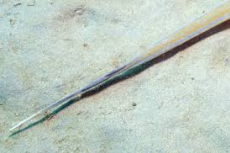
Stingrays may look like majestic, beautiful and practically harmless creatures when we see them on television or in aquariums flying through the water, but in reality this this is not quite the whole truth. One of my memories of this sea creature is whilst on holiday on a visit to an aquarium, where during this visit I clumsily dropped my sunglasses into the tank they were kept. Seeing this the staff member who worked with the stingrays stroked a few of them on their backs and simply reached in without a second thought and retrieved my sunglasses. You can imagine how much of a shock it came to me when I heard that Steve Irwin had in fact been killed by one of these animals whilst filming them in 2006, changing my view of them as a completely harmless fish. In captivity stingrays have their most valuable weapon taken away from them to protect the staff and visitors to the aquarium, the sharp razor sting on the end of their tail. Although not all species of ray have this form of defence, those that do have it can be a very serious danger to anything that poses a threat to it, some species can even have more than one sting to their tail.

These stings are covered in a thin layer of skin, as can be seen in more detail in the picture, and have venom glands which can cause extreme pain and is on occasion lethal to humans. The venom in their barbed stings, which is actually an extension of their spine, was once used by the Ancient Greeks as a pain killer and anaesthetic! Stingrays are not known to usually be aggressive but can be antagonised and made angry easily, which is when they attack humans. They can be most dangerous when they camouflage themselves in the sand to hide from predators, and are trod on by unsuspecting people walking in the water. Consequently people are stung mainly in self-defence, rather than in aggression or anger. Although there have been many injuries and very few deaths relating to stingray attacks they are still very beautiful and majestic creatures. At the moment stingrays are threatened in their environment, which is any shallow water found near the coast in relatively cool water.

0 Comment:
Be the first one to comment on this article.